Simple, honest and sustainable – for Breathe Architecture, low cost and environmentally responsible building is all in a day’s work.
January 11th, 2012
For well over 10 years now, Jeremy McLeod and his team at Breathe Architecture have been setting out to show how to live and build sustainably – although they reject the term ’sustainable architects’.
“We’re urban design architects, but we just feel that we have a responsibility towards the environment,” McLeod explains.
“We try not to think of ourselves as environmental architects, just modern architects.”
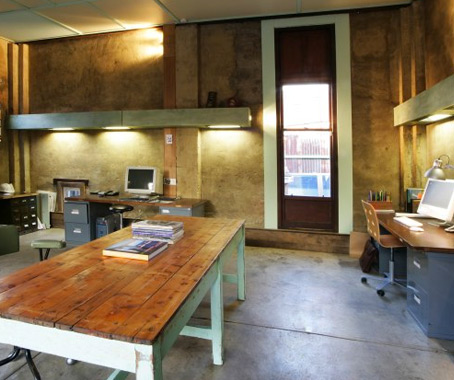
Breathe Studio
Low-tech and low cost, with minimal environmental impact, is the key to Breathe’s work. Central to the practice’s philosophy is acknowledging that a degree of roughness, of imperfection, is okay.
“To create the perfect space where everything is curated you spend so much energy – 90% of materials and the builder’s energy is spent in that last 10%, covering up all the junctures of the details, all the fixings,” McLeod explains.
“What we do is accept that a level of imperfection is okay. In fact, we cherish that imperfection; we play with that, and we use that as a feature to create interest.” Exposed fittings and honest, raw materials give Breathe’s projects their distinctive aesthetic.

Brother Babba Budan
“In one sense our hospitality spaces can seem quite sparse, but when you’re sitting there, there’s lots to look at. Rather than just being a sea of plasterboard that’s perfectly finished, it might be a sea of brickwork or a sea of plywood, but each piece of ply has its own character, each piece has been nailed differently.”

Nabiha
Keeping things stripped back and simple is paramount.
“We constantly question with all our projects, why are we putting this in? Do we need it? The simplest thing to do with sustainability is to build what someone needs, not what they want. And the other thing is to dematerialise the building – we strip it back; we take out the stuff that’s unnecessary,” McLeod says.
“Obviously our buildings are not just Spartan caves. We still believe that architecture is key to any project; you want to make sure that the projects are special and they’re great places to be, but we don’t just build layer upon layer of materials that gives you very little return.”
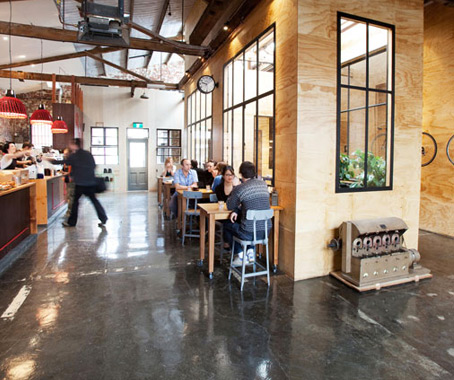
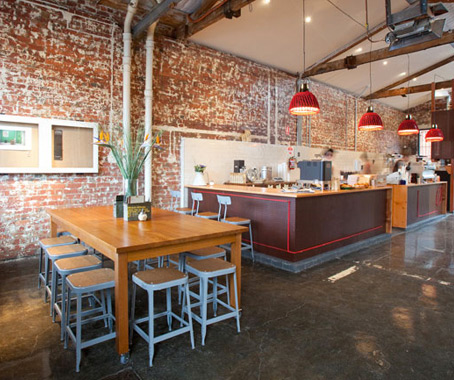
Seven Seeds
With any refits, as much of the existing building as possible is kept; services are left on the walls; found objects and existing materials are given a new life. New materials are always durable, longlasting and affordable; functional and yet aesthetic. ’Unpretentious’ is a word often used by McLeod when speaking about both his clients and his projects.
“People come to [us] with the idea that they want this raw, textural, relaxed feeling in their design. They don’t want a plasterboard box that’s perfectly curated,” McLeod says.
“We find it incredible that there’s still a niche in the market for sustainable architecture; we just think it’s something that everyone should be doing. And Australia’s catching up fast, but we’ve still got a way to go.”
Breathe Architecture
breathe.com.au
INDESIGN is on instagram
Follow @indesignlive
A searchable and comprehensive guide for specifying leading products and their suppliers
Keep up to date with the latest and greatest from our industry BFF's!
The new range features slabs with warm, earthy palettes that lend a sense of organic luxury to every space.

A new and on-trend collaboration between Greg Natale and Kaolin has resulted in a varied, high-quality range of aesthetically distinctive porcelain tile designs.

Movements and promotions abound in the industry – most notable being HASSELL’s appointment of seven new Principals across its ten global studios.
The internet never sleeps! Here's the stuff you might have missed
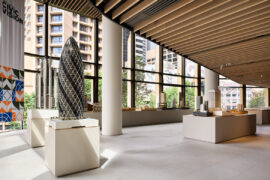
Civic Vision, a major exhibition showcasing the global work of Foster + Partners, has officially opened in Sydney.
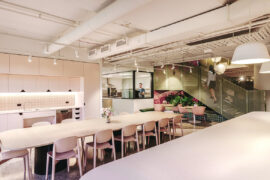
Gray Puksand’s adaptive reuse of former Melbourne office into Hester Hornbrook Academy’s new City Campus shows how architecture can support wellbeing, connection and community.
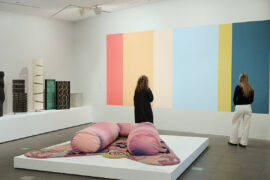
At the NGV’s Making Good: Redesigning the Everyday, design becomes a force for repair. From algae-based vinyl to mycelium earplugs, the exhibition proves that rethinking the ordinary can reshape our collective future.